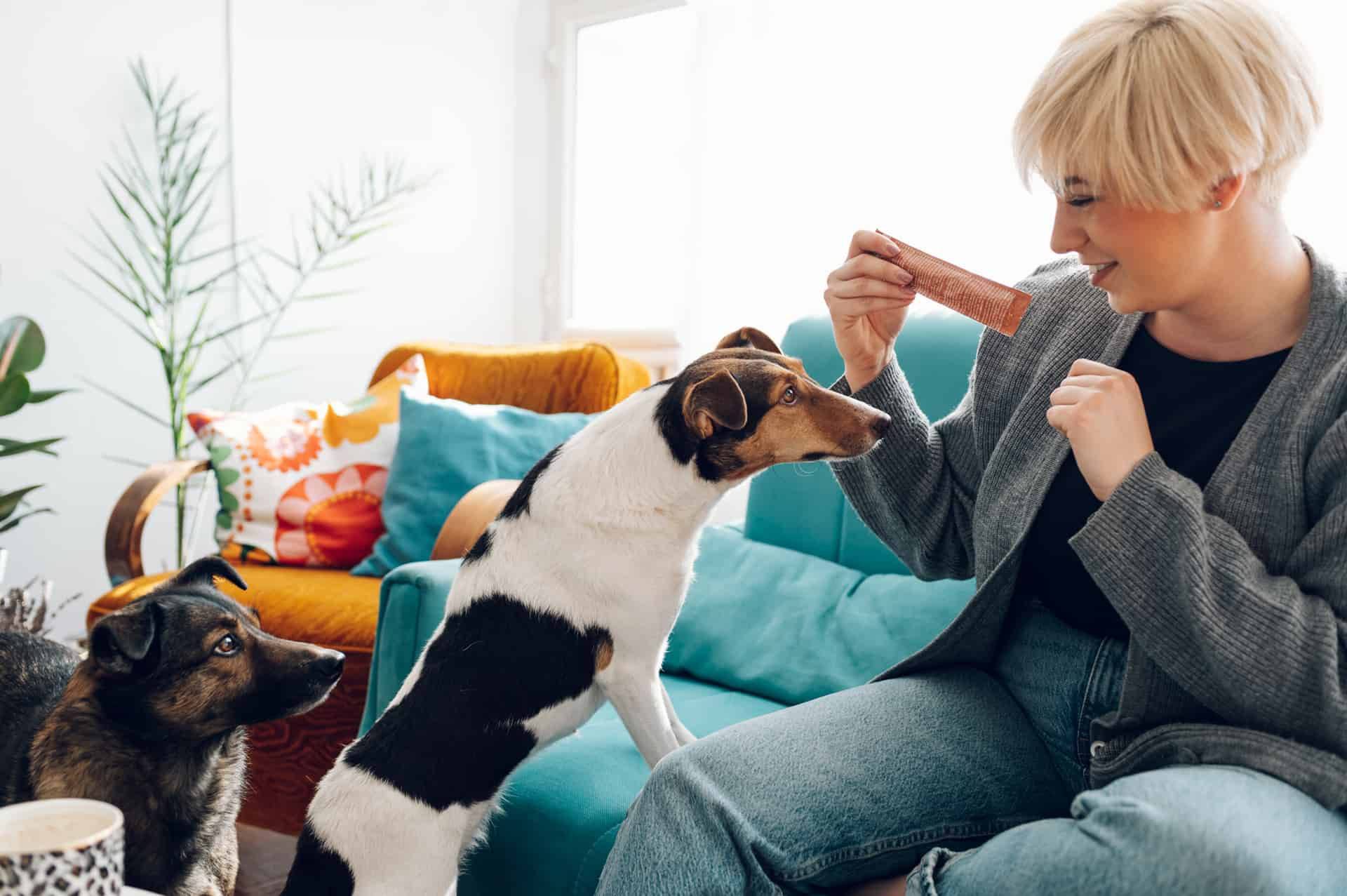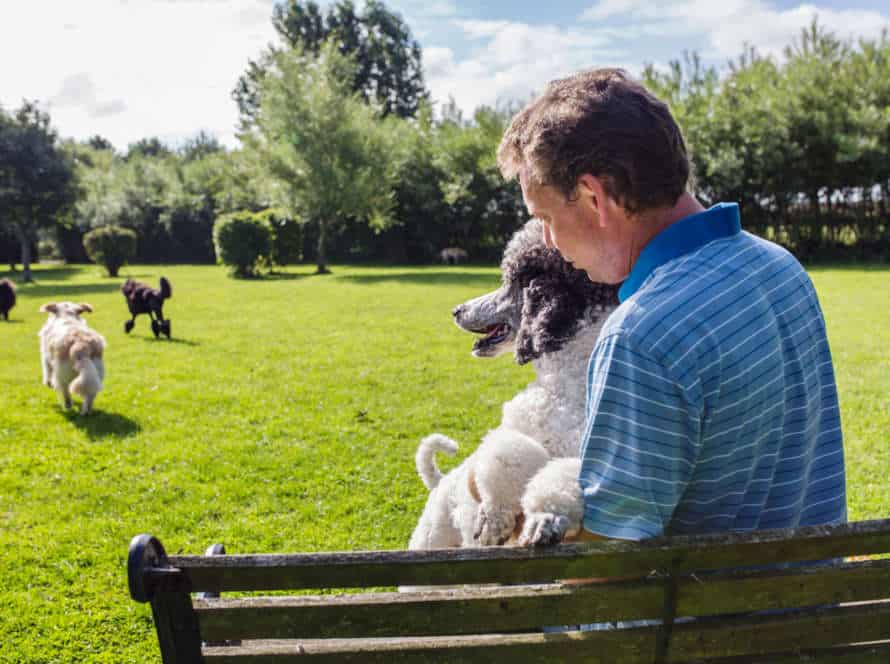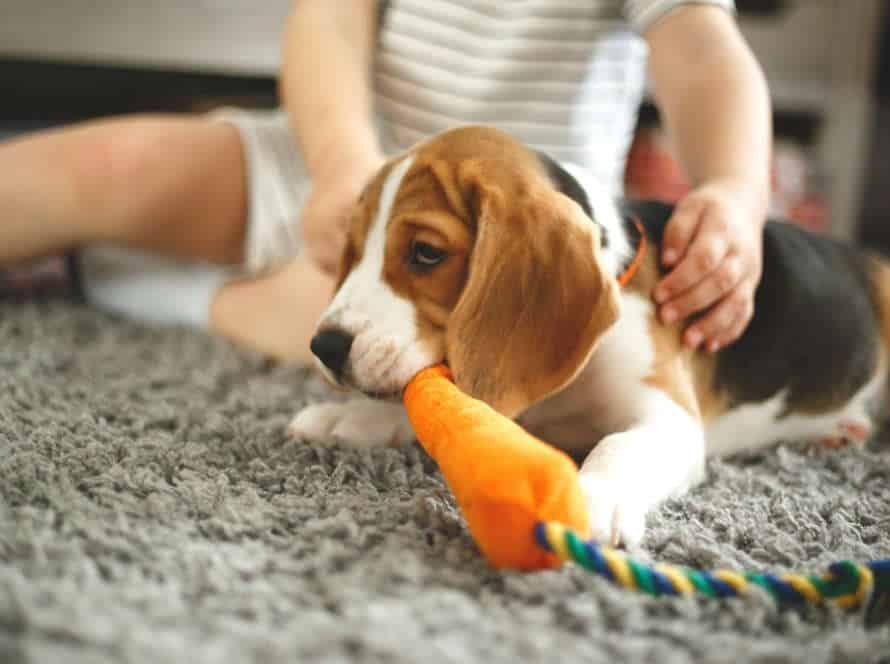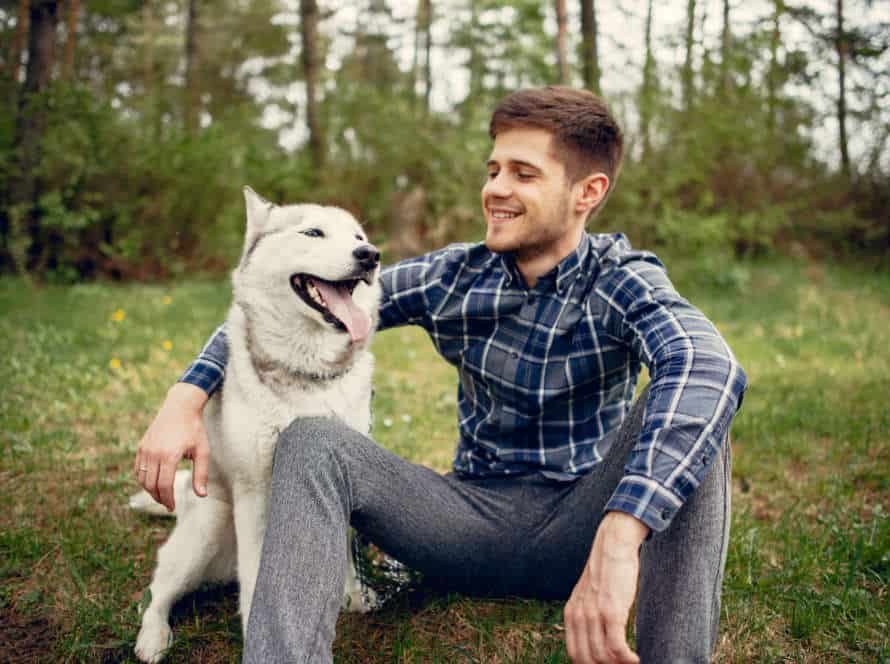Individual Training: Catering to Each Dog’s Unique Needs
Individual dog training is a great way to help each pup in their areas of need. It can target specific issues, like aggression, separation anxiety, or disobedience. It also allows trainers to tailor their approach to the dog’s learning pace and personality.
Plus, this type of training offers one-on-one attention, so dogs can gain the skills they need faster than with group classes. In the end, individual training creates a strong bond between dog and owner and a fulfilling training experience.
Understanding Your Dog
Understanding your pup is essential for giving them the top-notch care. Take the time to learn your individual dog’s wants and needs. That can make a big difference in their training success. Get to know your dog’s personality and requirements. Then, you’ll design a program that works best for them.
Identifying personality traits and temperament
It’s key to know your dog’s character and temperament for training tailored to them. Here’s what to think about:
- Breed: Each breed brings different temperaments and personalities.
- Environment: Where they’ve been living and their past affect conduct and character.
- Energy Level: Dogs have various degrees of activity, so take this into account when training.
- Socialization: Socializing teaches dogs how to interact with others.
- Learning Style: Every pup has a unique way of learning, so find this to make the training plan successful.
Tip: Ask your vet or a professional dog trainer for more info about your pup’s characteristics for the best training plan.
Identifying learning style
Dogs have various learning styles – just like us humans. Discovering your pup’s learning style can help you teach them in a way that suits them. Common types are: visual, auditory, and kinesthetic.
- Visual Learners: These dogs understand hand signals, facial expressions, and demonstrations.
- Auditory Learners: They’ll pick up verbal cues like commands, praise, and tones.
- Kinesthetic Learners: Games and obstacle courses help them learn best.
Identify your dog’s learning style to get the most out of their training. Tip: Experiment with different training methods and observe your dog’s reactions to figure out their learning style.
Identifying physical abilities
It is important to recognize your pup’s physical capacities when devising a training plan that fits their needs. Here are a few steps to assess them:
- Notice their conduct during activities like running, jumping, and climbing.
- Watch for limping or stiffness in their gait and stride length.
- Test their equilibrium and coordination by putting obstacles in their way.
- Measure their stamina by progressively raising exercise duration.
- Assess their power by testing their pulling or pushing capacity.
Knowing your dog’s physical abilities is key to constructing a training plan that boosts their strengths and enhances their weaknesses.
Pro Tip: Have a chat with a vet or dog trainer to make a personalized training plan that is right for your pup’s unique physical abilities.
Developing a Training Plan
Each pup is one-of-a-kind and deserves to be trained with a plan just for them. Every dog has a different reaction to certain things, so having a personal plan is necessary. Consider age, breed, nature, and lifestyle when creating a training plan. Knowing the pup’s needs helps them learn and develop properly.
Setting training goals
Setting training goals is key for an effective training plan that matches each dog’s special needs. Here are some tips for goal setting:
- Assess your pup’s abilities: Look at their behavior, strong points, and weak spots to see what they need to learn.
- Set specific objectives: Make achievable, measurable goals that fit your dog’s skills and your overall training plan.
- Divide goals into smaller parts: Split your goals into achievable steps to keep your pup keen and gradually increase their skills.
- Use positive reinforcement: Praise their progress and efforts with treats, compliments, and playtime to keep them growing.
- Monitor progress: Watch your pup’s progress to decide when to move to the next goal or adjust the training plan.
These steps will help you create a customized training plan for your pup’s special needs, abilities, and personality.
Pro Tip: Realistic training goals make sure your dog stays interested and enthusiastic, which leads to a well-behaved, happier pup.
Identifying training methods based on learning style
When creating a training plan for individual dogs, it’s key to identify the right methods based on their learning style. Knowing the different learning styles and adapting methods to suit each one can help accelerate learning and make the experience positive for both dog and owner.
Here are the training methods for each style:
- Visual learners: They learn by observing. Show physical demonstrations to help the dog understand better.
- Auditory learners: They learn through sound. Use clear verbal commands for effective training.
- Tactile learners: They learn through touch and interaction. Use hand signals and physical reinforcements to train them.
- Mixed learners: Most dogs have a variety of learning styles. Mix up the methods to meet their needs and optimize learning.
Adapting training plan to physical abilities
Crafting a workout schedule tailored to your pup’s unique needs is essential for their physical and mental wellbeing. To modify the plan to match their capabilities, you must assess their strengths and weaknesses.
Here’s how to adjust the plan for your pet’s physical abilities:
- Observe your dog carefully and recognize their physical capabilities and limits.
- Set realistic objectives and goals that fit your pup’s aptitudes.
- Divide complex workouts into smaller, achievable parts.
- Employ targeted exercises to bolster your pup’s weak spots and construct on their strong points.
- Integrate days of rest into the regimen to prevent exhaustion.
- Attend to your pup’s body language and modify the plan suitably.
By creating a plan that caters to your pet’s special needs, you can assist them in reaching their highest potential and bettering their overall health.
One-on-One Training
One-on-one training is often an awesome way to tackle any behavioral or obedience issues your dog has. You can tailor it to their individual needs and personality. This way, you make sure they receive the right instructions. Plus, you can adjust your approach whenever you need. And you get extra help from a pro trainer. Let’s explore the advantages of one-on-one training for your pup!
Benefits of one-on-one training
One-on-one training has many benefits for both you and your pup! Unlike group training, it can be tailored to suit each pup’s individual needs. That means a higher success rate and more efficient use of time and resources.
Benefits for Dogs:
- Personalized attention and custom training plans that fit their learning style and behaviour.
- Fewer distractions, meaning faster and more effective training.
- Socialization at an individual level, helping them build trust and confidence with the trainer.
Benefits for Owners:
- Direct communication with the trainer to ask questions and discuss progress.
- Deeper understanding of their pup’s behaviours and needs, leading to stronger bonds.
- Flexibility in scheduling, location, and training approach to fit their lifestyle and goals.
If you’re having difficulty training your pup, one-on-one training with a professional may be just what you need to succeed.
Personalizing training techniques
When training dogs, personalization is key. Each pup has its own character and learning style.
One-on-one teaching is a great way to do this. Here are some hints on how to do it right:
- Watch the dog’s actions and judge its strong and weak points.
- Make a tailored plan that focuses on its weak areas.
- Utilize positive techniques such as treats and compliments to encourage good behavior.
- Keep the lessons short, enjoyable, and frequent.
- Remember each dog learns at its own rate, so be persistent, steady, and be ready to change your approach when needed.
Pro tip: One-on-one training can be more effective than group sessions, as it gives the pup individual attention and suits its special needs.
Addressing individual challenges and problem behaviors
Dog training needs individual attention. It is important to address each dog’s challenges and problem behaviors. Here are some common dog training challenges that require individual attention:
- Separation anxiety – Patience, time, and positive reinforcement help ease a dog’s fears and phobias.
- Aggression – Specialized training and behavior modification techniques are needed.
- Fearfulness – Gentle desensitization, counter-conditioning, and a calm demeanor help.
Individual dog training needs one-on-one sessions with a professional. However, consistency outside of these sessions is key. Owners must reinforce training techniques. This helps ensure a happy, healthy, and well-behaved dog.
Positive Reinforcement Training
Positive reinforcement training is a cool way to train your pup! Just reward them with stuff they like, such as treats, praise or playtime. This method can help build a great bond between you two. Let’s find out more about this awesome way of training and how it can help your doggo!
Understanding the principles of positive reinforcement
Positive reinforcement dog training involves rewarding good behavior. Praise, treats, and toys motivate the pup to repeat the desired behavior. It’s necessary to understand the principles of this technique.
The key principles of positive reinforcement dog training are:
- Timing: Rewards must be given right after the desired behavior.
- Consistency: Reward the pup each time they do the desired behavior.
- Value: The rewards should be something the pup loves.
- Progress: Start with small goals and move up to more complex behaviors.
- Individuals: Each pup is unique and will respond differently, so adjust your approach to fit their needs.
These principles help you to train your pup and reinforce positive behavior.
Using treats and other rewards effectively
Treats and rewards are a big part of positive reinforcement training. It’s a great way to help teach your dog obedience.
Here are some tips for using treats and rewards effectively:
- Give your pup high-value treats they love, when they do something right.
- Reward your pup quickly and give them praise.
- Use fewer treats as your pup gets better at the desired behavior.
- Switch up the reward types to keep your pup motivated.
- Cut back on meal sizes and calories, so you don’t overfeed your pup with treats.
Following these guidelines will help you train your pup with positive reinforcement.
Pro Tip: Each pup is unique; make sure to adjust your training plan to fit their needs and personality.
Incorporating play into training
Incorporating play into training is a great way to reinforce positive behavior for your pup. Here are some ideas:
- Use toys – dogs love toys and using them during training can really help.
- Hide-and-seek – hide treats around the house or in the backyard to get your pup to use their nose and instincts.
- Make obedience training fun – use rewards like treats or toys to make it more enjoyable.
- Play fetch – this is a great way to reinforce behaviors like coming when called.
Every dog has unique needs, so make sure to adjust the training to fit their personality. Positive reinforcement with play can be an effective and fun way to help your pup learn.
Adapting Techniques for Different Breeds
Individual training? Unique! Every pup has special needs. Identify the breed, age, and temper. Then, adjust training techniques. Here, we’ll discuss how to adapt based on breeds, plus cater to individual needs.
Understanding breed-specific traits and tendencies
Training your pup effectively requires understanding their breed-specific traits and tendencies. Not all dogs are the same; each breed has unique behavior patterns and learning processes. You must adapt your techniques for different breeds and individual training. Consider these factors:
- A dog’s breed history, personality, temperament, and energy level.
- Specific traits and tendencies like hunting instincts, bossiness, and wariness.
- The pup’s stage of development, learning style, and motivation level.
- Training methods and techniques suitable for the breed and your goals.
By catering to each dog’s unique needs, you can ensure a successful and enjoyable training experience. Rewards for positive behavior and being patient is key!
Adapting training techniques for breed-specific needs
Training dogs according to their breed-specific requirements is essential. Every breed has distinct traits, attitudes, and personalities. Specialized techniques are required to get the best outcomes.
Here are some tips on adapting training techniques for different breeds:
- Herding Breeds (Australian Shepherds, Border Collies, etc.): These need lots of mental and physical stimulation. Agility training and task-oriented training work well.
- Working Breeds (Boxers, Dobermans, etc.): These are easily trainable and react great to reward-based training. Practical skills, such as obedience and scent work, should be focused on.
- Toy Breeds (Chihuahuas, Pomeranians, etc.): These can be difficult to train due to their size and energy. Short, concentrated training sessions with positive reinforcement work well.
- Large Breeds (Great Danes, Mastiffs, etc.): These require firm, consistent training from early on. Leash training, socialization and obedience should be focused on.
By customizing training methods to each breed’s unique needs and temperament, you can attain ideal training results. Plus, you’ll have a content and well-behaved canine companion!
Addressing breed-specific challenges in training
Training dogs isn’t the same for all breeds. Each one has unique characteristics, so tailored training is essential for effective learning. Pet owners must be aware of breed-specific challenges when training their pet.
- For Pit Bulls: Leash training should begin early. A consistent and firm approach will help manage their energy and teach socialization.
- For Beagles: Positive reinforcement and short training sessions are best. Patience is key for teaching obedience and good behaviour.
- For German Shepherds: Advanced training techniques should be used as they learn quickly. Early training, socialization, and reinforcement are most effective.
- For Chihuahuas: Reinforce good behavior to avoid excessive barking, resource guarding and fear-based behavior. They need mental stimulation and a consistent routine to succeed.
Adapting training techniques to different breeds will enhance the bond between dog and owner, making learning an enjoyable experience. Expert tip: Consult a professional dog trainer to understand the needs of your breed and incorporate it into your routine.
Ongoing Training and Maintenance
Training and maintenance are musts when caring for a pup.
This ensures they hone their abilities and learn good behaviors.
Customize training to your dog’s unique needs for the best care.
Reinforce existing skills and teach new ones often.
This way your pup will stay happy, healthy, and safe around people and other animals.
Reinforcing training throughout the dog’s life stages
Dog training is an ongoing process. You need to provide for each dog’s individual needs. Here are some tips to help you:
- Keep training short and regular.
- Change methods to match behavior, likes and abilities.
- Treats and compliments are the best way to get desired behavior.
- Socialize and let them experience different situations.
- Get professional help if your dog has bad behaviors or you need help with techniques.
Reinforcing training throughout your pet’s life stages strengthens your bond and gives you a well-behaved, happy dog.
Addressing new challenges as they arise
Training and maintenance of dogs is a continual process. It’s essential to deal with new struggles while considering each dog’s individual necessities. Here are some tips for separate training:
- Analyze your dog’s character and behavior to comprehend their qualities, imperfections, and inclinations.
- Set up clear, uniform training approaches and daily practices that are in line with your dog’s learning style.
- Use positive reinforcement to motivate and remunerate great behavior and discourage bad behavior.
- Deal with novel challenges rapidly and alter your training techniques as necessary.
- Be patient, steady, and insistent in your methodology and stay dedicated to your dog’s training and well-being.
Remember that every pup is distinctive and necessitates an exceptional approach to training and maintenance. By managing fresh issues as they come up and providing to each dog’s specific needs, you can create a strong bond with your furry friend and guarantee their long-term health and joy.
Continuing to adapt training plan based on physical abilities and changing needs
Adapting your pooch’s training scheme regularly is a must-do to make it successful. Just like people, canines are all different and need personalised plans. Here are some tips to meet their individual needs:
- Check their physical capacity often and amend the plan accordingly.
- Look into any behavioural issues or changes in behaviour.
- Bring in new exercises and challenges to make the process stimulating.
- Encourage good behaviour with positive reinforcement.
- Be consistent and patient to get the best results.
Frequently Asked Questions
Q: How do you determine what type of training each dog needs?
A: We assess each dog individually to determine their unique needs and temperament. This allows us to create a personalized training plan that is tailored to their specific strengths and weaknesses.
Q: Can you train older dogs or dogs with behavioral issues?
A: Yes! It’s never too late to start training and we specialize in working with dogs of all ages and temperaments. We have experience working with dogs with behavioral issues such as aggression, anxiety, and fearfulness.
Q: What types of training methods do you use?
A: We use a variety of positive reinforcement techniques that focus on rewarding good behavior rather than punishing bad behavior. This creates a more pleasant and effective learning experience for the dog.
Q: How long does it take to see results in my dog’s behavior?
A: Every dog is different, but typically our training methods start showing results within a few sessions. However, more severe behavioral issues may take longer to address.
Q: Do you offer obedience training or just behavioral training?
A: We offer both obedience training (so your dog will sit, stay, come, etc.) and help with addressing behavioral issues. Our training is personalized to meet the specific needs of each individual dog.
Q: How much does individual dog training cost?
A: The cost varies depending on the type of training needed and the length of the program. Please contact us for a personalized quote based on your dog’s unique needs.







